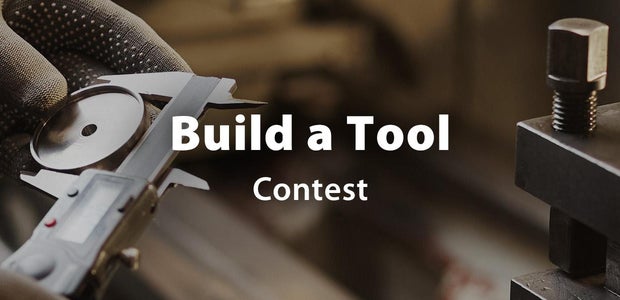Introduction: Choosing Floss and Fabrics
I've tried embroidering on just about everything with all types of thread and floss.
As you can imagine, this hasn't always worked out very well! Instead of leaving you to learn from your mistakes while nursing very sore fingers, I thought I'd give a little guidance about what I've found to work best. :)
In this lesson I'm going to cover floss, pearl cotton, floss storage and how to choose fabric for embroidery.
Step 1: Pearl Cotton Vs Six Stranded Floss
Hand embroidery threads come in two flavors: pearl (perle) cotton and six stranded floss. In this class I'll be exclusively teaching with six stranded floss, just because it's what I prefer to use.
Six stranded floss can be divided into smaller groups of strands for stitching different thicknesses.
Pearl cotton is not divisible, and instead comes single stranded in several thicknesses, including sizes 3, 5, 8, and 12. Size 3 is comparable to six strands of embroidery floss, while size 12 is comparable to one strand of embroidery floss.
While embroidery floss is flat and smooth when stitched, pearl cotton has a distinctive twisted look.
Floss comes in skeins and cones, while pearl cotton comes in skeins and balls.
Skeins are how most types of floss are found - the green floss above is in a skein! Skeins often contain 8.7 yards of floss. Cones are just what they sound like - the same floss, wrapped around a cone! Cones often comes in gram measures - 100 grams (450 yards for DMC) and 500 grams (2270 yards for DMC). Balls of floss come just like the purple pearl cotton above. :)
Step 2: Choosing Embroidery Floss
When buying embroidery floss, it's important to be very careful about which brands you choose. Cheap floss is not likely to be colorfast, meaning it will bleed its color onto the fabric when it gets wet. Cheap floss is also rough and hard to work with, so it could make your embroidering look sloppy.
(Pearl cotton bought in craft stores is nearly always high quality, so you don't need to be concerned there.)
My favorite brand is DMC.
It's the most widely available floss I've found in the US. You can find it at nearly every crafting, quilting, or sewing shop! I highly recommend it as I have been embroidering with it for my whole embroidery career.
I have never had issues with it bleeding, and it's nice and easy to work with.
Other Popular Floss Brands
There are many more brands out there, but many of them are harder to find and require special ordering online.
Keep in mind each floss brand has its own numbering system when it comes to organizing and matching your floss. For example, black is DMC color 310 and Anchor color 403.
Buying in Bulk
As a beginning stitcher, I highly suggest getting a large variety of single colors. This will allow you to figure out which colors you use the most.
I only really buy black in bulk by the cone. I like to outline all my satin stitching with it and most of my text is done in black, so I use quite a bit!
If you start to find yourself going through a few skeins of a color in under a month, it may be a sign you should start buying in bulk. If you order online, you can get any color of DMC floss in a 12 skein box from Joann and other online shops.
Step 3: Storing Embroidery Floss
How you store your embroidery floss is up to you, really! Some people leave them as skeins, some people take off the paper and keep them as circles of floss, and some wind their floss onto bobbins.
I like to use bobbins and organize my floss in plastic boxes as shown above. I try to keep only one bobbin of every color in the plastic boxes. I store my extra floss in a zippered bag to keep it safe from dirt and hair.
Bobbins are little plastic or paper cards you wind floss onto for storage, as shown below.

I write the color number of every skein of floss on the plastic bobbins in permanent marker. This allows me to easily replace floss when I start running low and helps keep me a little more organized.


To wind your floss skein onto a bobbin, pull the paper pieces off each end. Use your fingers to "open" the floss so it looks like the second photo - a circle of floss!


Now, find an end to the floss and pinch it against the bobbin card with your thumb, while gently beginning to wrap the floss around the card with the other hand.

Make sure you wind the bobbins very gently. If you pull too tight, you'll warp and crease the floss.
The floss should still look fairly rounded! If it's flattening out as you wrap you're pulling too tight.

Once your bobbins are wound, make sure to put them away in whatever container you're using. Especially if you have pets or kids. They love floss. ;)
P.S. Winding bobbins takes a little while, so it's a great excuse to sit and listen to your favorite podcast or binge watch TV. :D
Step 4: Threading the Needle and Dividing Floss
Threading the Needle
To thread an embroidery needle with floss, trim the floss end with sharp scissors so it's even. Then, stick the end in your mouth to wet it. Press the wet floss end between your thumb and pointer finger to flatten it out.
You may think this is gross, but it's the way it's been done since the start. ;)
If you're having problems, I highly recommend running the end of the floss over a little Thread Heaven - it'll stiffen and smooth the end, making it easier to push through the eye of the needle.
Dividing Embroidery Floss

When you need to divide your embroidery floss into strands, pick apart the strands in the middle and then pull it apart!
You can divide the floss from one end, but chances are it will curl and tangle around itself and frustrate you unless you have experience fighting with floss. ;)
Step 5: Choosing Fabric for Embroidery
First up, what not to pick:
- Stretchy fabrics, such as jersey or fleece
- Tight woven or stiff fabrics, such as heavy canvas or denim
- Fluffy fabrics, such as fleece
- Cross stitch fabric such as counted Aida
Technically, you can embroider on just about anything. However, the above fabrics will be really tough for you to work with if you've never embroidered before. I don't want you to start this journey by rage quitting because the fabric is too hard to work with. ;)
My absolute favorite fabric to embroider on is linen.
I use this linen / rayon blend from Joann Fabrics almost exclusively. I have it in white and natural, but it comes in loads of other colors too! I always buy it in bulk when it's on sale, since I go through about 8-10 yards per year with my embroidery work.
The other linens shown in the photo above are straight linen (no rayon or synthethic fibers).
I like to wash and pre-shrink the linen before I use it.
Other fabrics for embroidery:
- Muslin. Muslin is often used for drafting patterns and backing quilts. If you go this route, try to find a muslin with a tight weave. Place your hand behind it and make sure you can't see it through the muslin!
- Quilting cotton. Quilting cotton is another good choice. The weave is similar to muslin, but is normally more opaque.
- Broadcloth. Broadcloth is similar to muslin but typically a little stiffer. Make sure you can't see your hand through it for best results!
Step 6: Pre-Washing Fabric for Embroidery
I like to wash fabric before I embroider on it.
Many fabrics tend to shrink when washed, which is something you absolutely DO NOT want when embroidering.
Embroidering a piece on unwashed fabric and then washing the finished piece in warm water and soap or pressing with a hot iron after washing in cool water will cause the fabric to shrink. Your floss will not shrink at the same rate, which will lead to puckering and rippling. The stitching will look loosened and not be as tight as it should be.
It will make your pieces look like a mess, which would be a shame after spending hours on them!

How to Wash Fabric:
- When you buy the fabric, check the bolt end to make sure it is washable. Take a photo of the care label so you remember how it can be washed!
- Lay the piece of fabric on a large surface and trim any raw edges with pinking shears. You don't have to cut much off - 1/8 - 1/4 an inch is perfect! Do not cut the fabric into pieces before washing.
- If you have several colors of fabric, make sure to sort by colors. Fabric can bleed when washed, so you don't want to wash a piece of dark fabric with a light one.
- Wash and dry according to the care instructions.
- Fold the fabric and put it away. You'll cut and press the fabric as needed later!













